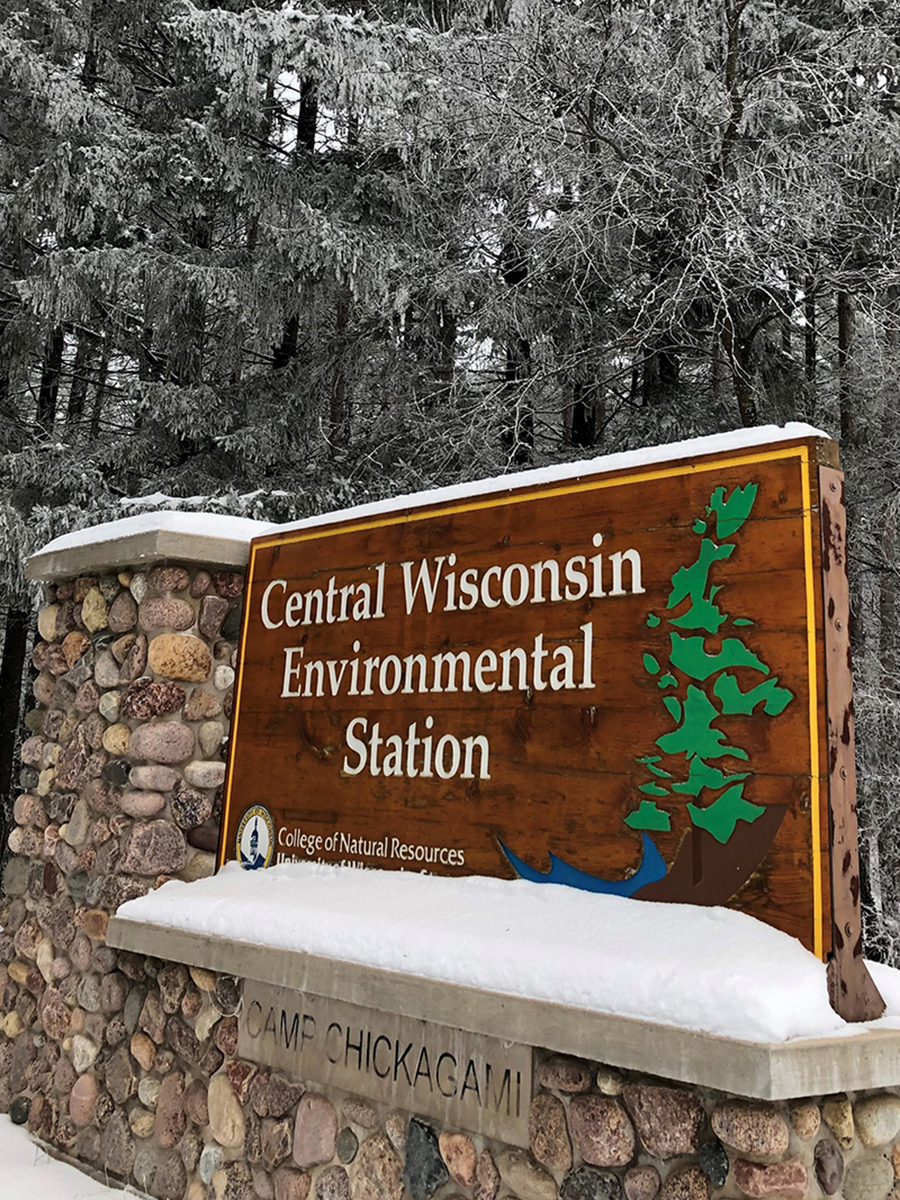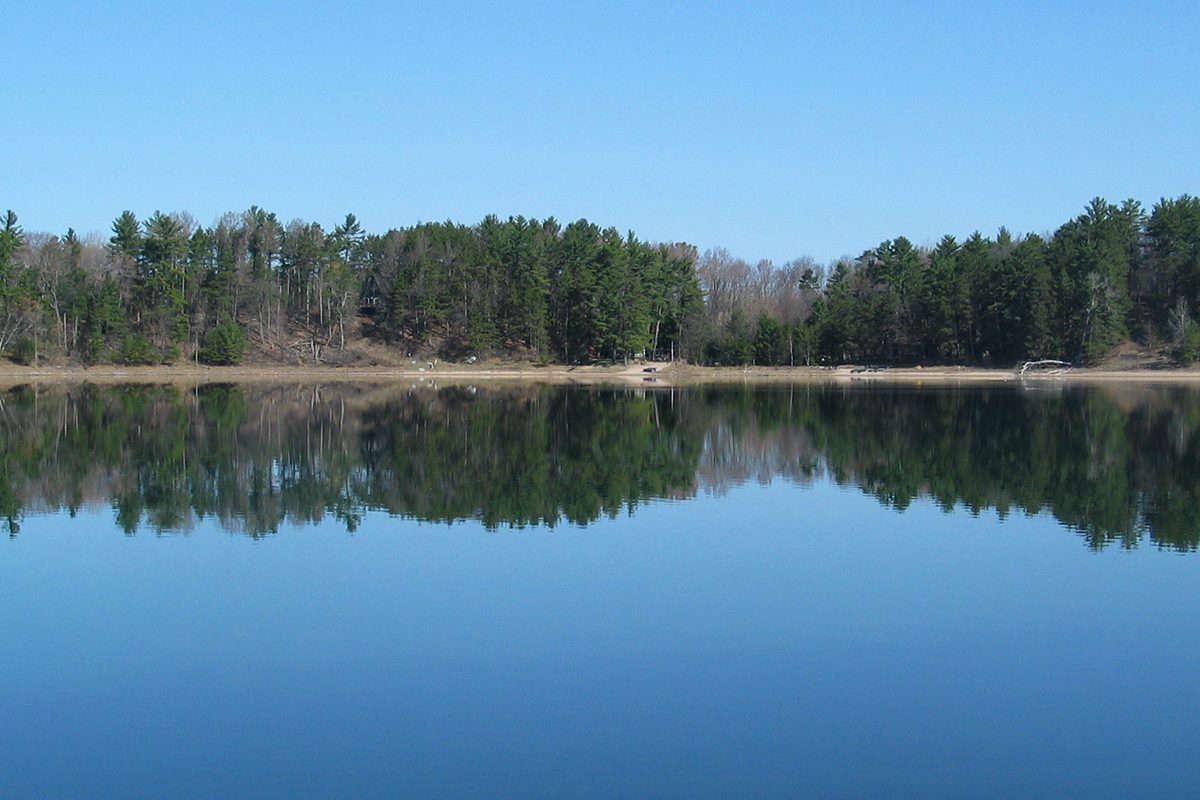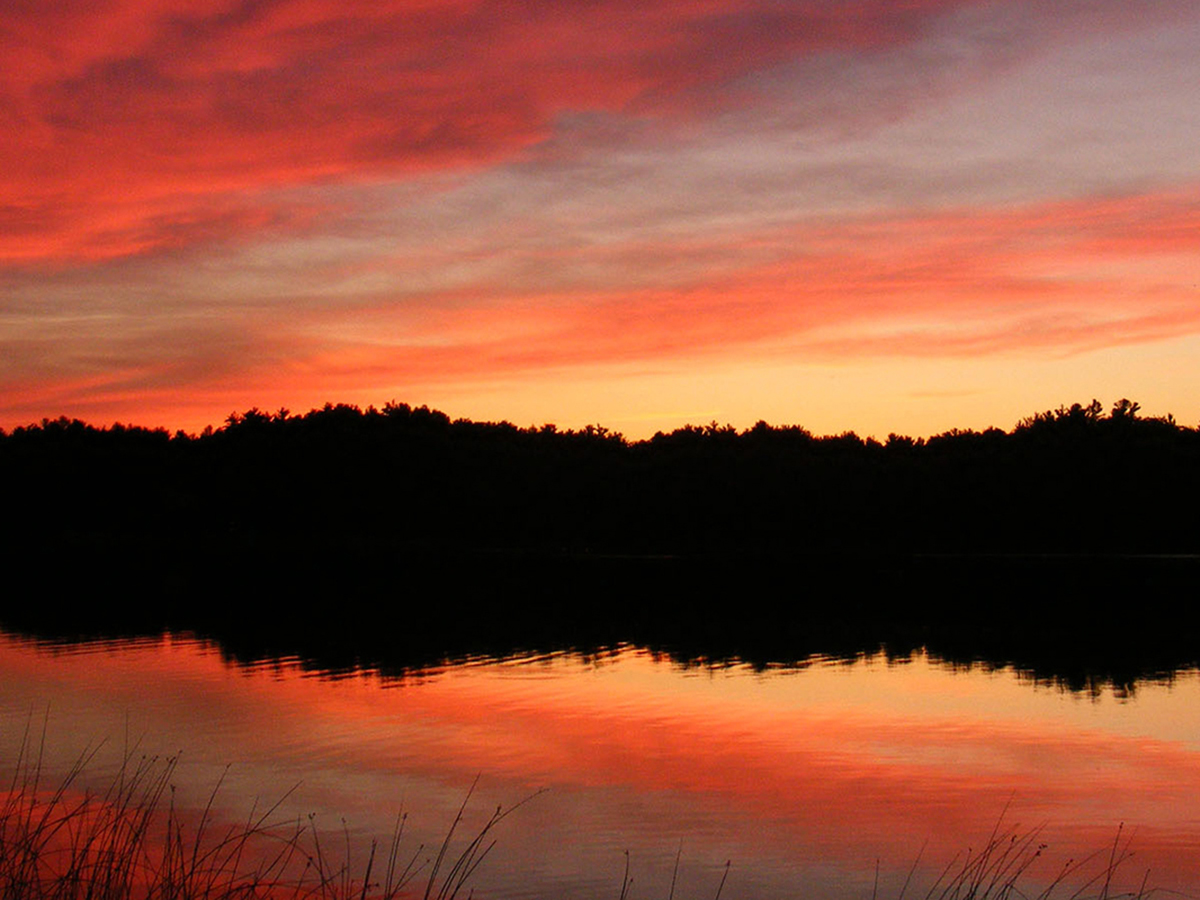CENTRAL WISCONSIN ENVIRONMENTAL STATION Accessibility
The Central Wisconsin Environmental Station values diversity and strives to make its environmental education and camping programs accessible to all. The information below is intended to help program participants determine what areas they will be able to access and what additional accommodations will be necessary for full participation. If you have specific questions or requests, contact Tom.Quinn@uwsp.edu.



Parking and Transportation
Parking areas with sufficient space for a van with a lift and an unobstructed route of travel to the front door are available at Sunset Lodge, Walker Lodge, Anderson Lodge, Shaw Cabin, the West Bathhouse, and some classrooms. There are no designated accessible parking spaces with signs on site. CWES is not accessible by public transportation.
Sunset Lodge (Dining Hall, Meeting Room, and Office)
Sunset Lodge is a single-story building with no stairs between rooms or hallways. The approach is flat and unobstructed. Main doors are 36.5″ wide and have > 60″ between the outside doors and vestibule doors. Doors have a pull bar to enter, a push plate to exit, and require a pull force of 10 pounds.
CWES serves food buffet style. The counter for hot food is 34″ high and the salad bar is 30″ high. Some items such as trays and cutlery may be hard to reach from a seated position. The space for maneuvering between serving areas is >60″ but could be challenging to negotiate when filled with participants. Staff are available to help with accessing food and drinks and carrying them to the table. Most dietary requests can be accommodated with prior notice.
Tables in the dining area or meeting room are movable with individual chairs. Depending on set up, space for maneuvering may be limited.
Building has a hearing loop installed and a LCD projector for visual presentation of information.
Signage throughout the building limited and does not include braille or raised lettering.
Men’s and women’s bathrooms are available and easily accessible from all parts of the building. Each bathroom has two stalls and a sink. Doors are 33″ wide, require an opening force of 13 pounds, and have a push panel to enter and pull bar to exit. Each has an accessible stall with a door that opens out, >60″ of turning space, two 18″ grab bars, and a toilet 18″ high located near one wall. The sinks are 32″ high, allow for 17″ of knee space underneath, and have faucets that can be turned on without manual rotation. Soap dispensers are 48″ from the floor and paper towel dispensers are 43″ from the floor. Space between stall, sink, and door is > 60″ and unobstructed. There are no single occupant or gender-neutral bathrooms available.
Cabins and Dorms
CWES has four types of buildings for sleeping. The four buildings with an accessible approach (no stairs) are described below.
Hemlock Cabin
A traditional log cabin that sleeps eight with four bunk beds and a table and chairs in one room. Turning radius in the center of the room is greater > 60” and easily navigable. Bottom bunks are 24″ from the floor and there is a space of 21″ between the bottom and top bunks. The front door is 34″ wide, has a lever handle and requires a pull force of < 1 pound. The footpath to this cabin is not intended for vehicles. The bathhouse is accessible via a short walk on a wide, hard-packed trail. The footpath Sunset Lodge is wide and relatively flat.
Walker Lodge
A large dorm-style lodge with a total of 50 beds split between two sides. The front door of the building has a lever handle and requires a pull force of < 1 pound. The inside door of the vestibule is too close to the outside door to allow for easy maneuvering but can be propped open. Most beds are bunked but each side has one individual bed. Each side has a multi-stall bathroom with showers. Sinks are 30″ and 34″ high with 23″ of knee space and faucets that can be turned on without manual rotation. The most accessible toilet stall is 35″ wide with two grab bars on opposite walls and a toilet 17″ high. The door of the stall swings out. The most accessible shower has an entrance 32″ wide, but the inside turning radius is > 60″. It has a regular (not removable) showerhead and a shower knob that requires manual rotation. The common room of lodge can be accessed from the front entrance but there are three large steps for sitting and walking down to the fireplace in the center of the room. Vehicles can drive to the entrance of this building. The footpath to Sunset Lodge has some elevation change.
Anderson Lodge
A lodge that can sleep 26 people in 13 moveable bunk beds in two rooms. It also has a large common room with a woodstove and kitchenette (but no running water). Building has two doors, one with stairs and one with a wooden ramp. Door from the ramp opens with a lever handle and a pull force of < 1 pound. The bunks are approximately 48″ apart. Bottom bunks are 27″ from the floor and there is a space of 24″ between the bottom and top bunks. Vehicles can drive to the entrance of this building. The walk to the North Bathhouse is fairly long but flat. The footpath to Sunset Lodge has some elevation change.
Shaw Cabin
A new cabin that can sleep 12 people on 6 bunk beds. The entrance has a flat, paved approach. The front door has a lever handle and requires 7 pounds of pull force to open. Bottom bunks are 19″ high and the space between the bottom and top bunks is 27.5″. Turning radius in the center of the room is greater > 60” and easily navigable. The bathhouse is a short, paved path away. Vehicles can drive to the entrance of this building. The footpath to Sunset Lodge has some elevation change.
Bathhouses
North Bathhouse (near Hemlock Cabin)
This bathhouse has two identical sides for men and women with separate entrances. Entrances have a small 1″ step due to uneven ground. The front door and inside door are > 60″ apart, have lever handles, and require a pull force of 5 pounds. The walkway to the sinks, toilet stalls, and shower stalls is at least 37″ throughout. Sinks are 31″ high with 16″ of knee space. Faucets can be operated without manual rotation. The most accessible toilet stall is 35″ wide with two grab bars on opposite walls and a toilet 19″ high. The door to the stall swings inward but is positioned in the corner so it does not impede travel. The most accessible shower has a flat entrance, is 34″ wide, has a removable showerhead and knob that requires manual rotation, and does not have grab bars. The footpath to this bathhouse is not intended for vehicles. The footpath to Sunset Lodge is relatively flat.
West Bathhouse (near Shaw Cabin)
The front door has a flat paved approach, opens with a lever handle, and requires a pull force of 7 pounds. The inside doors to the men’s and women’s sides have pull handles and are > 60″ from the outside door. Sinks are 34″ high with knee space of 24″. Faucets are small. The accessible toilet stall has a turning radius of 58″, grab bars on two adjoining walls, and a toilet height of 18″. There are two accessible showers with removable heads, knobs that do not require manual rotation, and bars on two walls. One of the shower stalls has a seat that folds down. The door to the stall swings inward but is positioned in a corner so does not impede travel. Vehicles can drive to the entrance of this building. The footpath to Sunset Lodge has some elevation change.
Program Areas
Most trails and roads at CWES are dirt or covered in woodchips. Most of the paths between cabins, lodges and instructional buildings are relatively flat and wide. The trail to the campfire bowl (amphitheater) is very steep. The team-building course is located on a hill and trails between elements are not well defined. Accessing the waterfront requires descending 90 stairs.
Administrative and Instructional Support
CWES requests information from teachers and parents regarding participant specific needs. Administrative, instructional, and facilities staff work together to respond to requests for accommodations. CWES will alter teaching locations, modify instructional materials or lesson content, or add instructional staff as needed.
Instructional staff receive training on a variety of topics related to diversity and inclusion. Environmental education staff in the fall and spring seasons learn about diverse learning styles, effective behavior management, disability characteristics, and fostering social inclusion in their courses at UW-Stevens Point. Summer camp staff receive similar training at CWES as required by the American Camp Association.